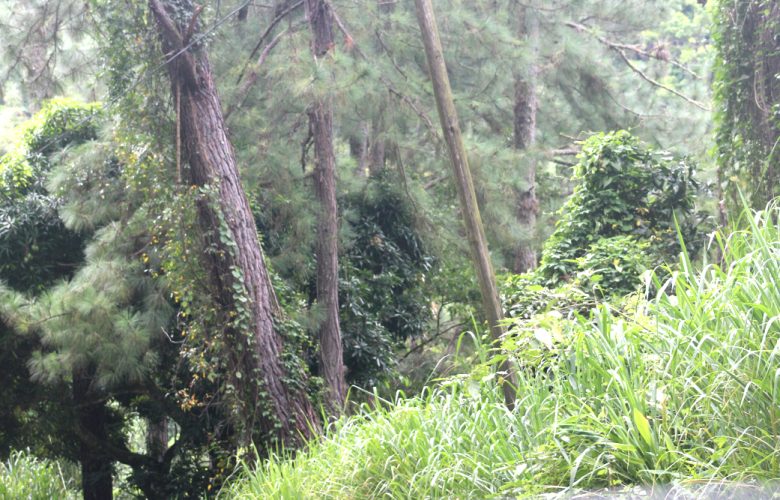
Forests in the Caribbean have changed significantly since the beginning of the colonial era. In the 16th Century more than 90% of the region was covered by forest. By the early 20th Century many islands experienced rapidly deforestation, in excess of 50%. Deforestation was largely the result of the development of commercial agriculture which included products such as coffee, bananas and sugarcane. Currently, forests are being removed for timber, housing, mining and subsistence and commercial agriculture.
In the Caribbean forests are essential for water protection, cultural appreciation, recreation, biodiversity conservation control and erosion prevention (McGinley, 2007).
Forests also provide a safe space for endangered animals. Only about 13% of the world’s forests are protected (World Wildlife Fund, 2021).
Forests serve many purposes, including, to:
- Support ecosystems and habitats:
Animals rely on forests for habitats. About 90% of the earth’s animal species use forests as their home. These animals include: birds, butterflies, crocodiles, lizards, snakes, monkeys and insects. Many animals, such as jaguars, live in the forests or within the streams and rivers of forest regions. In many countries humans use forests as their primary habitat.
2. Help stabilize climate:
Trees and plants help to balance the atmospheric temperatures through evapotranspiration. Huge forests, such as the Amazon rainforest, are essentially for cooling the atmosphere through the process of evapotranspiration.
3. Regulate the water cycle:
As a result of rainfall, forests help to maintain the natural cycle of water evaporation, condensation and precipitation. Forests help to make these processes possible by absorbing rainwater. Forests soak up water that flows into streams and transmit it down into groundwater reserves.
4. Purify the air:
Forests are vital to the atmospheric air that we breathe. Forests help to purify the air by absorbing carbon dioxide for photosynthesis and oxygen is given out through plants and trees. Furthermore, forests help to reduce greenhouse gases which harm the environment by causing global warming.
5. Add medicinal value:
Forests have long contributed to the development of medicinal cures. The linkages between forests, medical research and pharmaceuticals are evident because of the large-scale nature of plant and animal life. A large number of drugs that are used for medicinal treatment come from plants and animals that inhabit forests.
6. Provide food:
Forests play a vital role in ensuring food security for many people across the globe. Several types of foods (e.g. fruits, oils, vegetables, nuts) are routinely harvested from forests.
Some types of forests found in the Caribbean:
- Cloud Forest
- Lower montane moist forest
- Montane moist forest
- Dry limestone forest
- Marsh forest
- Rainforest
References for Article
International Union Conservation of Nature. (2021). Deforestation and Forest degradation. International Union Conservation of Nature. Services: https://www.iucn.org/resources/issues-briefs/deforestation-and-forest-degradation
Ramni Jamnadass, Stepha McMullin, Miyuki Iiyama, Ian K. Dawson, Bronwen Powell, Celine Termote, Amy Ickowitz, Katja Kehlenbeck, Barbara Vinceti, Nathalie van Vliet, Gudrun Keding, Barbara Stadlmayr, Patrick Van Damme, Sammy Carsan, Terry Sunderland, Mary Njenga, Amos Gyau, Paolo Cerutti, Jolien Schure, Christophe Kouame, Beatrice Darko Obiri, Daniel Ofori, Bina Agarwal, Henry Neufeldt, Ann Degrande and Anca Serban (2015). Understanding the Roles of Forests and Tree Based Systems in Food Provision. Open Edition Books. Services: https://books.openedition.org/obp/2756?lang=en#authors
Jamaica Conservation and Development Trust. (2017). Blue and John Crow Mountains. Jamaica Conservation and Development Trust. Services: https://www.blueandjohncrowmountains.org/natural-heritage
Jamaica Conservation and Development Trust. (2018). Natural Heritage. Jamaica Conservation and Development
Trust. Services: https://www.jcdt.org.jm/blue-john-crow-mountains/natural-heritage
Jamaica Travel and Culture. (2009). Fern Gully. Jamaica Travel and Culture. Services:
https://www.jamaicatravelandculture.com/destinations/st_ann/ocho_rios/fern-gully.htm
McGinley, Kathleen. (2007). The Caribbean, International Institute for Tropical Forestry. USDA Forest Service. Services: https://sites.google.com/site/forestryencyclopedia/Home/The%20Caribbean
Madaan, Sonia. (2021). Why are forest important and why we need them. Earth Eclipse. Services: https://eartheclipse.com/environment/importance-of-forests.html
Tansi International College, Awka. (2020). Meaning of Forest and Forestry, Types Of Forest, Forest Terms. Tansi International College, Awka. Services: http://www.tansicollege.edu.ng/content/week-4-meaning-forest-and-forestry-types-forest-forest-terms
World Rainforest Movement. (2001). Jamaica: Deforestation linked to Mining, Agriculture, and Tourism. World Rainforest Movement. Services: https://wrm.org.uy/articles-from-the-wrm-bulletin/section1/jamaica-deforestation-linked-to-mining-agriculture-and-tourism/
World Wildlife Fund. (2021). Responsible Forestry. World Wildlife Fund. Services: https://www.worldwildlife.org/industries/responsible-forestry




